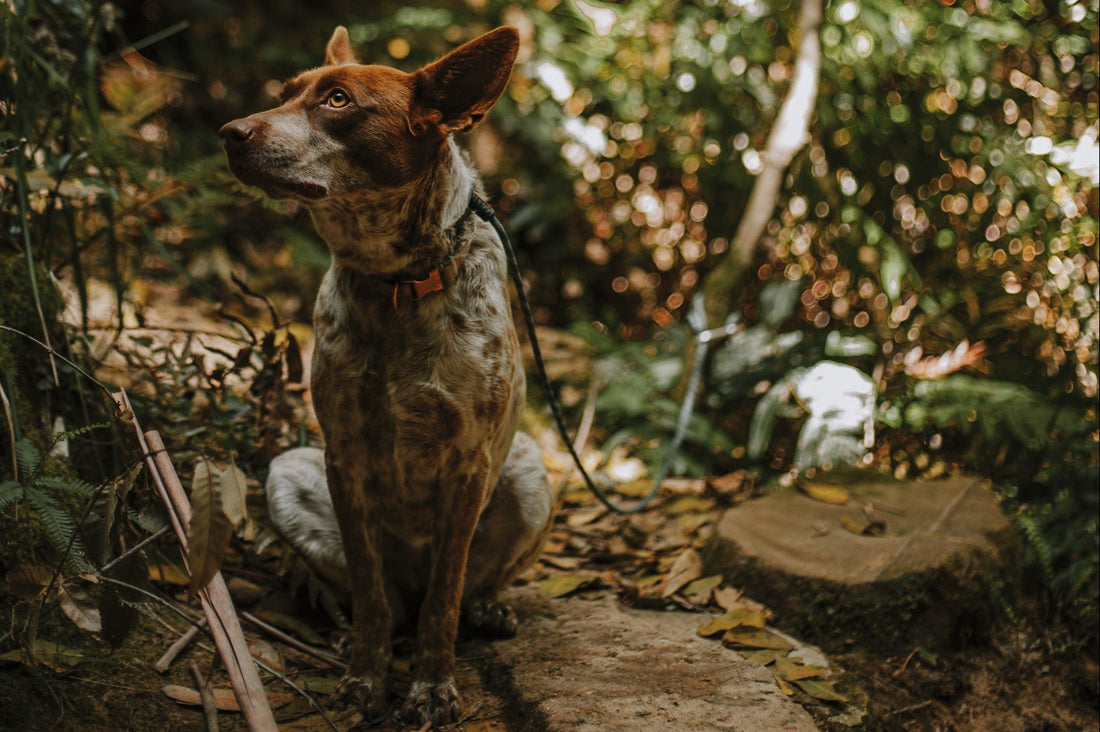
Hiking with Dogs
Share
Hiking with Dogs
Dogs may not be allowed in National Parks, but that doesn’t mean you have to leave your best mate behind to go hiking. There are plenty of dog-friendly trails around NSW — from local reserves and state forests to council-managed walking tracks. With a bit of planning, you and your four-legged companion can enjoy the bush safely and responsibly together.
Before heading out, always double-check whether dogs are permitted on the specific trail you’re visiting. National Parks are off limits because they’re protected habitats for native wildlife — but nearby areas often have great alternatives.
Things to Bring
Just like you pack your own hiking essentials, your dog needs a few of their own. Bring water and a bowl — hot tip: get a collapsible one to save space in your pack. A sturdy lead is a must (retractable ones can tangle easily on narrow tracks), along with poop bags to clean up after them.
Pack a few snacks or treats to keep their energy up, and a towel for muddy paws or a quick rinse if they’ve found a puddle. It’s also worth checking their collar and ID tag before you go — and make sure your microchip details are up to date just in case.
Things to Consider
For many dogs, especially city or suburban ones, the bush can be sensory overload — full of new scents, sounds, and wildlife. Start small. Choose a short, easy trail for your first few outings and work up to longer walks as your dog grows more confident.
Always keep them on a leash. Even the calmest dog can bolt after an unfamiliar noise or chase an interesting smell. Keeping them close not only protects your dog but also local wildlife and other hikers.

Things to Remember
Good trail etiquette makes a big difference. Step to the side of the track to let others pass, just as you would on a shared path or in the park. Not everyone is comfortable around dogs, and some people might be hiking with young kids or be at risk of falling should a dog jump up at them.
If another dog approaches, check in with the owner before letting them greet each other. Avoid letting your dog run up to strangers — even friendly enthusiasm can cause issues on uneven ground.
Things to Be Wary Of
Bush trails come with a few natural hazards. In warmer months, ground surfaces can get hot enough to burn paws — if it’s too hot for your hand, it’s too hot for their feet.
Ticks and leeches are common in some areas, particularly after rain or in dense undergrowth, so check your dog thoroughly after the hike.
Watch out for grass seeds and burrs that can work their way into paws or fur, and take care near creeks where snakes or sharp rocks may be hiding.

Things to Calm Them Down
If your dog does happen to slip away, it helps to have something familiar on hand. Bringing one of their favourite toys can be a clever backup — a squeak or a quick game can sometimes coax them back when calling their name doesn’t work. The sound or smell of something they love can cut through the noise and excitement of the bush far better than shouting ever will.
Things to Finish Off
Back at the car, take a few minutes to brush your dog before heading home. It helps remove any seeds, dirt, or plant matter stuck to their fur, and gives you a chance to check for ticks, leeches, bites, or scratches. It’s also worth giving them another quick once-over when you get home, especially around the ears, paws, and under the collar.
Final Thoughts
With a little training and preparation, dogs can make great hiking companions. They thrive on time outdoors, exploring new places, and simply being by your side.
As the saying goes — they may be only a small part of our lives, but we’re their whole world — and they don’t want to miss out on the fun. A few thoughtful steps will keep them safe and happy on the trail, so you can both enjoy many adventures together.
